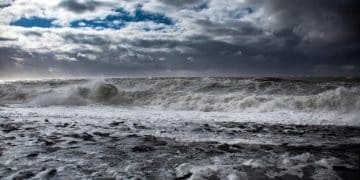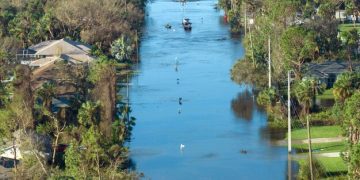Climate Change’s Impact on Western US Freshwater by 2025: A Detailed Look
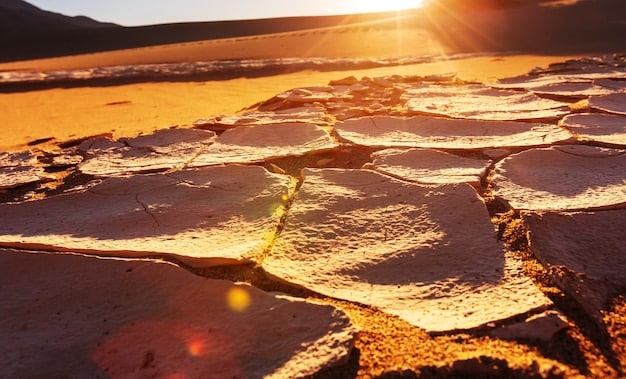
By 2025, climate change is anticipated to significantly reduce the availability of freshwater resources in the Western US, primarily through diminished snowpack, earlier runoff, and increased evaporation in critical river basins, posing severe challenges for agriculture, urban supply, and ecosystems.
The intricate dance between climate and water resources in the Western United States has always been precarious, a delicate balance susceptible to even slight shifts. As we approach 2025, a critical question emerges: How will climate change affect the availability of freshwater resources in the Western US by 2025? This inquiry is not merely academic; it strikes at the heart of agricultural viability, urban resilience, and ecological health across a vast and vital region. Understanding these impending shifts is crucial for proactive planning and mitigation, ensuring the well-being of millions.
The Foundations of Western Water: Snowpack and Runoff Dynamics
Freshwater in the Western US largely depends on winter snowpack. This natural reservoir stores water as snow in mountains through colder months, then gradually releases it as meltwater in spring and summer. This slow release is vital, ensuring a steady supply for rivers, reservoirs, and ultimately, human consumption and agriculture throughout the dry season.
Climate change is fundamentally altering this ancient rhythm. Warmer temperatures mean more precipitation falls as rain rather than snow, particularly at lower elevations, leading to immediate runoff instead of accumulation. Additionally, the snowpack that does form is melting earlier and faster due to higher ambient temperatures and increased solar radiation, even from dust on snow surfaces.
Altered Precipitation Patterns
The Western US is experiencing a significant shift in its precipitation patterns. While total annual precipitation might not drastically change in some areas, the timing and form of it are critically different. This means less snow accumulation for gradual release.
- ❄️ Diminished Snowpack: Lower snowfall amounts and increased rain-on-snow events reduce the overall volume of stored water.
- 💧 Earlier Runoff: Snowmelt begins earlier in the spring, shortening the water supply window for late summer.
- 🌡️ Higher Evaporation: Warmer temperatures contribute to greater evaporation from surfaces and increased plant transpiration, further depleting available water.
These changes have profound implications. An earlier and faster runoff means that reservoirs, designed to capture this flow, may struggle to hold the surge of water, leading to potential spills or, conversely, less water available later in the season when demand peaks. The traditional water management systems built on historical snowmelt patterns are becoming increasingly misaligned with the new realities of a changing climate, creating a significant challenge for water managers across the region.
Key River Basins and Their Vulnerabilities
The Western US is crisscrossed by several major river basins, each facing unique but interconnected challenges from climate change. The Colorado River Basin, the most prominent, supplies water to seven states and Mexico, supporting vast agricultural lands and major metropolitan areas like Los Angeles, Phoenix, and Las Vegas. Its dependence on snowmelt from the Rocky Mountains makes it highly vulnerable to changes in snowpack dynamics and earlier runoff.
The Sacramento-San Joaquin River Delta in California is another critical system, providing water for much of California’s agriculture, home to the nation’s most productive farmlands, and supplying drinking water to two-thirds of the state’s population. This system is heavily reliant on Sierra Nevada snowpack, which is projected to decline significantly. The Columbia River Basin, while experiencing different dynamics, also faces altered streamflows affecting hydropower, salmon populations, and irrigation.
Impact on the Colorado River Basin
The Colorado River is already experiencing historically low flows and reservoir levels, with Lakes Mead and Powell at troubling capacities. The basin has been in a long-term drought, exacerbated by rising temperatures and altered precipitation.
- 📉 Reduced Flow: Projections indicate continued declines in the river’s flow due to climate change impacts.
- ⚠️ Reservoir Depletion: Lower inflows intensify pressure on existing water storage, threatening water security.
- ⚖️ Interstate Conflicts: Diminished supply exacerbates tensions among states over allocation rights, making long-term agreements more challenging.
The implications extend beyond water supply. Hydropower generation at Hoover Dam and Glen Canyon Dam is jeopardized by lower water levels, affecting energy reliability for millions. Ecosystems dependent on specific flow regimes and water temperatures are also at risk, threatening biodiversity and natural habitats. The interconnectedness of these challenges underscores the complexity of managing water in a warming climate.
Projected Impacts by 2025: A Near-Term Outlook
While the full extent of climate change impacts unfolds over decades, significant shifts are expected to be noticeable by 2025. Projections suggest a continuation of current trends: reduced snowpack, earlier and more rapid snowmelt, and increased evaporative demand. These factors will collectively lead to a measurable decrease in overall water availability in many parts of the Western US.
The most immediate and discernible impact will likely be on reservoir levels. Lakes Mead, Powell, Shasta, and Oroville – critical water storage facilities – are expected to remain at historically low levels, or even decline further, given current climate trajectories. This reduction in stored water directly limits the supply available for municipal, agricultural, and industrial uses, necessitating more stringent water conservation measures and potentially leading to water rationing in some areas.
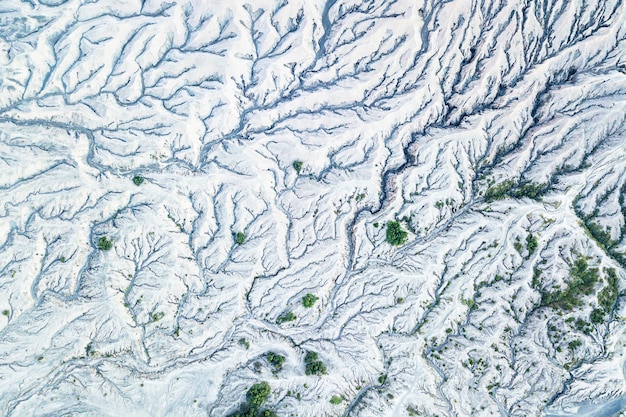
Specific Regional Forecasts
Different regions within the Western US will experience varying degrees of impact, though none will be spared entirely. California, already grappling with prolonged droughts, is expected to see further reductions in Sierra Nevada snowpack, intensifying pressures on its vast agricultural sector and urban centers. The Pacific Northwest may experience changes in the timing of streamflow, potentially affecting hydropower generation and ecosystem health.
- 🌾 Agricultural Strain: Farmers will face increased water restrictions, potential crop losses, and higher costs for irrigation.
- 🏙️ Urban Water Management: Cities will implement stricter conservation measures and explore alternative water sources.
- ⚡ Hydropower Risks: Lower reservoir levels will reduce hydropower generation capacity, impacting energy grids.
The year 2025, while seemingly close, represents a critical near-term checkpoint in our understanding and management of climate-induced water stress. The observed changes will provide invaluable data and reinforce the urgency for adaptive strategies, moving beyond incremental adjustments to systemic transformations in water governance and infrastructure. The challenges underscore the need for innovative solutions and regional cooperation to safeguard future water supplies.
Consequences for Agriculture and Urban Centers
The impending freshwater scarcity poses existential threats to two pillars of Western US society: agriculture and thriving urban centers. The agricultural sector in states like California, Arizona, and Colorado is massively dependent on irrigation, consuming 80-90% of the region’s total water supply. Reduced water allocations will inevitably lead to difficult choices for farmers, potentially forcing them to fallow fields, switch to less water-intensive crops, or reduce crop yields altogether. This has significant economic ramifications, impacting food security and the livelihoods of thousands.
Urban centers, on the other hand, although consuming a smaller percentage of regional water, face the challenge of consistently supplying millions of residents and businesses. Water restrictions, increased water utility costs, and the need for significant infrastructure investments in water recycling, desalination, and stormwater capture will become more common. This shifts a greater burden onto residents and local governments, necessitating widespread behavioral changes and long-term planning.
Adapting to Less Water
Both sectors are actively seeking ways to adapt, though the path ahead is fraught with complexity. Agriculture is exploring precision irrigation technologies, drought-resistant crops, and more efficient water delivery systems. Urban areas are investing in wastewater recycling plants, direct potable reuse initiatives, and public education campaigns to encourage conservation. These efforts, while promising, often require substantial capital investment and face regulatory hurdles.
- 💧 Water Rationing: Increased likelihood of mandatory water restrictions for residents and businesses.
- 💰 Economic Downturn: Agricultural output reduction impacting regional economies.
- 🏠 Rising Costs: Higher utility bills and increased cost of water infrastructure development.
The intertwined fate of agricultural productivity and urban vibrancy means that solutions cannot be sector-specific but must be comprehensive and integrated. Collaborative approaches, transcending traditional jurisdictional boundaries, will be essential to navigate the complex trade-offs and ensure equitable access to diminishing freshwater resources. The stakes are immense, touching upon everything from local economies to national food supplies.
Addressing the Challenge: Adaptation and Mitigation Strategies
As the reality of reduced freshwater availability becomes more pressing, various adaptation and mitigation strategies are gaining urgency. These approaches are multifaceted, ranging from technological innovations to shifts in policy and public behavior. No single solution will suffice; a combination of approaches, tailored to regional specificities, will be necessary to build resilience against the impacts of climate change on water resources.
At the forefront of adaptation is improved water management. This includes optimizing reservoir operations, implementing advanced forecasting techniques to better predict snowmelt and runoff, and investing in integrated water systems that allow for more flexible transfers between regions. Technologies like smart irrigation systems, leak detection, and efficient plumbing are becoming standard practices, reducing waste in both agricultural and urban settings. Policy interventions like tiered water pricing and rebates for water-efficient appliances also play a crucial role in incentivizing conservation among consumers.
Innovative Solutions
Beyond traditional methods, innovative solutions are being explored and developed. Desalination, while energy-intensive and costly, is gaining traction in coastal areas as a drought-proof water source. Advanced wastewater treatment and direct potable reuse offer significant potential for creating new, local water supplies from existing urban flows. Groundwater banking, where excess surface water is stored underground during wet periods, provides a vital buffer during droughts.
- 🌍 Water Recycling: Expanding facilities for treating wastewater to potable standards.
- 🌧️ Stormwater Capture: Implementing systems to collect and infiltrate urban runoff, replenishing local aquifers.
- 🤝 Interstate Cooperation: Developing shared governance frameworks for managing trans-boundary rivers.
Mitigation strategies, while broader in scope, are equally vital. Reducing greenhouse gas emissions globally is the ultimate solution to slowing the pace of climate change and, consequently, its impact on water resources. Locally, efforts to improve forest health, reduce wildfire risk, and restore natural ecosystems can enhance watershed resilience and water quality. The path forward demands a holistic perspective, integrating local actions with global climate ambitions.
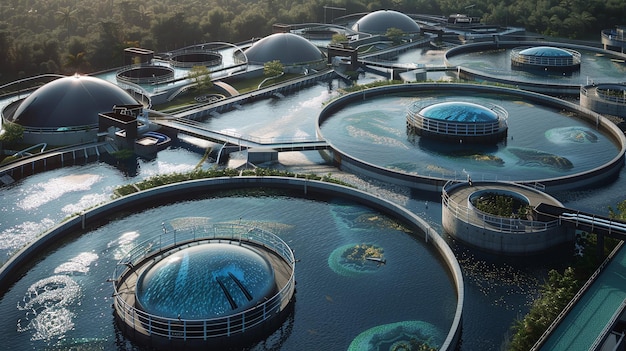
The Role of Policy and Governance
Effective policy and robust governance structures are indispensable in navigating the complex challenges of freshwater scarcity in the Western US. Water rights, often established over a century ago, are based on historical flow patterns that no longer reflect current realities. Reforming these systems to promote greater flexibility, efficiency, and equity is a monumental task, but one that is critical for future water security.
Interstate agreements, such as those governing the Colorado River, are under immense strain. Renegotiating these agreements to reflect diminished supplies and changing climatic conditions requires unprecedented levels of cooperation and compromise among diverse stakeholders. Federal funding and support for water infrastructure projects, research, and data collection are also crucial, often providing the necessary capital and scientific backing for regional initiatives.
Community Engagement and Education
No policy can succeed without public understanding and buy-in. Engaging communities, educating them about water challenges, and fostering a culture of conservation are paramount. Local governments and water agencies are increasingly implementing outreach programs, encouraging residents to adopt water-saving habits and participate in water planning processes. This grassroots involvement is essential for sustainable water management.
- 📊 Data-Driven Decisions: Relying on scientific data and modeling for informed policy choices.
- 🤝 Public-Private Partnerships: Collaborating to fund and implement water conservation projects.
- 📜 Regulatory Adjustments: Modernizing water laws to address climate change impacts.
Ultimately, the effectiveness of any strategy hinges on the political will to enact difficult changes and the collective commitment to shared responsibility. The decisions made in the coming years, particularly as we approach and move beyond 2025, will shape the hydrological landscape of the Western US for generations. It is a testament to the urgency of the moment that water, often taken for granted, is now at the forefront of regional and national dialogue.
| Key Point | Brief Description |
|---|---|
| ❄️ Snowpack Decline | Warmer temperatures lead to less snow, earlier melt, and reduced natural water storage. |
| ⬇️ Reservoir Levels | Major reservoirs like Mead and Powell will likely remain at historic lows, impacting supply. |
| 🌾 Agricultural Stress | Farmers face stricter water allocations, affecting crop yields and economic viability. |
| 🏙️ Urban Challenges | Cities will implement more conservation, possibly higher costs, and explore new water sources. |
Frequently Asked Questions About Western US Freshwater Resources
▼
Snowpack refers to the accumulated layers of snow, especially in mountainous regions, that persist for long periods. In the Western US, it’s crucial because it acts as a natural reservoir, slowly releasing water as melt in spring and summer. This gradual release provides a steady supply of freshwater for rivers, agriculture, and urban consumption during the dry months, making it the lifeblood of the region’s water system.
▼
By 2025, reduced snowpack will further exacerbate the already critical conditions in the Colorado River Basin. Lower snowmelt inflows mean less water reaching Lakes Mead and Powell, likely resulting in continued historically low reservoir levels. This impacts water allocations for agriculture and urban areas across seven US states and Mexico, potentially leading to more severe water restrictions and intensified interstate water disputes.
▼
The primary challenges for Western US agriculture include reduced water allocations from diminishing supplies, leading to the potential for widespread crop idling or decreased yields. Farmers may face higher water costs, pressure to switch to less water-intensive crops, and significant capital outlay for efficient irrigation technologies. These impacts collectively threaten the economic viability of many farming operations and could affect national food security.
▼
By 2025, urban areas in the Western US are expected to implement more stringent water conservation measures. This may include mandatory outdoor watering restrictions, increased public education campaigns for water-saving habits, and incentives for installing drought-tolerant landscaping and water-efficient appliances. Cities will also continue investing in advanced water recycling, stormwater capture, and possibly desalination projects to diversify their water portfolios and enhance resilience.
▼
Yes, effective policy and governance are crucial. Modernizing outdated water rights systems, renegotiating interstate water agreements to reflect current realities, and securing federal funding for critical water infrastructure are vital steps. While policies cannot create more water, they can ensure existing supplies are managed more efficiently, equitably, and sustainably. They also foster inter-state cooperation and provide frameworks for adapting to and mitigating the long-term impacts of climate change on water resources.
Conclusion
The trajectory for freshwater resources in the Western US by 2025 indicates a period of continued strain and adaptation driven by climate change. Diminished snowpack, earlier runoff, and increased evaporative demand are not distant threats but unfolding realities. The interconnected challenges for agriculture, urban centers, and natural ecosystems demand immediate and sustained attention, requiring innovative solutions, robust governance, and widespread community engagement. The path forward is complex, but by understanding these critical impacts, stakeholders can better prepare and work collaboratively towards a more resilient water future for the entire Western region.



